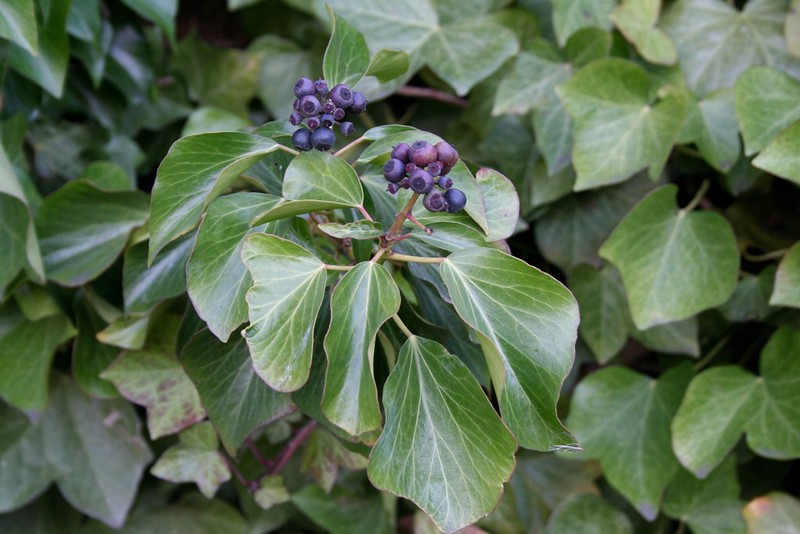Family: Araliaceae
Common name: English ivy
E-flora BC: https://linnet.geog.ubc.ca/Atlas/Atlas.aspx?sciname=Hedera%20helix
Wikipedia: https://en.wikipedia.org/wiki/Hedera_helix
Alongside daphne (Daphne laureola) and Himalayan blackberry (Rubus bifrons), English ivy is one of the most destructive invasive species in our area. English ivy is a vine, equally happy to spread along the ground as it is climbing into trees. On the ground, it can smother out all other vegetation. When climbing into trees, it compromises their health by shading the trees’ foliage and adding weight to the crowns, making the trees more susceptible to wind and snow damage.
Joining work parties at local parks and natural areas, to remove English ivy along with daphne and Himalayan blackberry is a very worthwhile activity. Likewise, controlling the plant in your yard is a good idea.
English ivy spreads rapidly by simply elongating its vines and sending out new roots along the way. However, it also spreads to new sites through dispersal of its seeds by birds. Preventing English ivy from flowering and producing fruit is important in controlling its spread.
Like daphne, English ivy is evergreen, as well as drought tolerant. As such, it can grow almost year round in our climate of mild winters and dry summers. You’ve surely seen English ivy on your forays around town and in parks and forests.
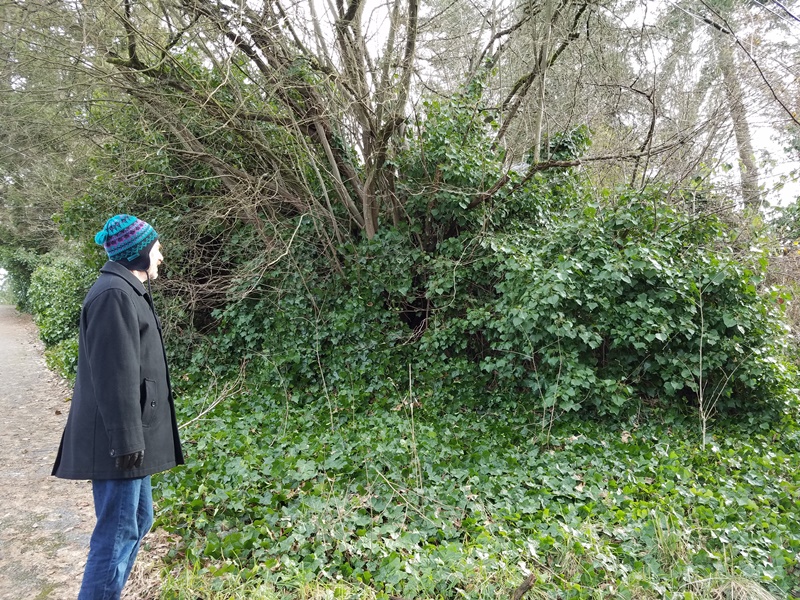

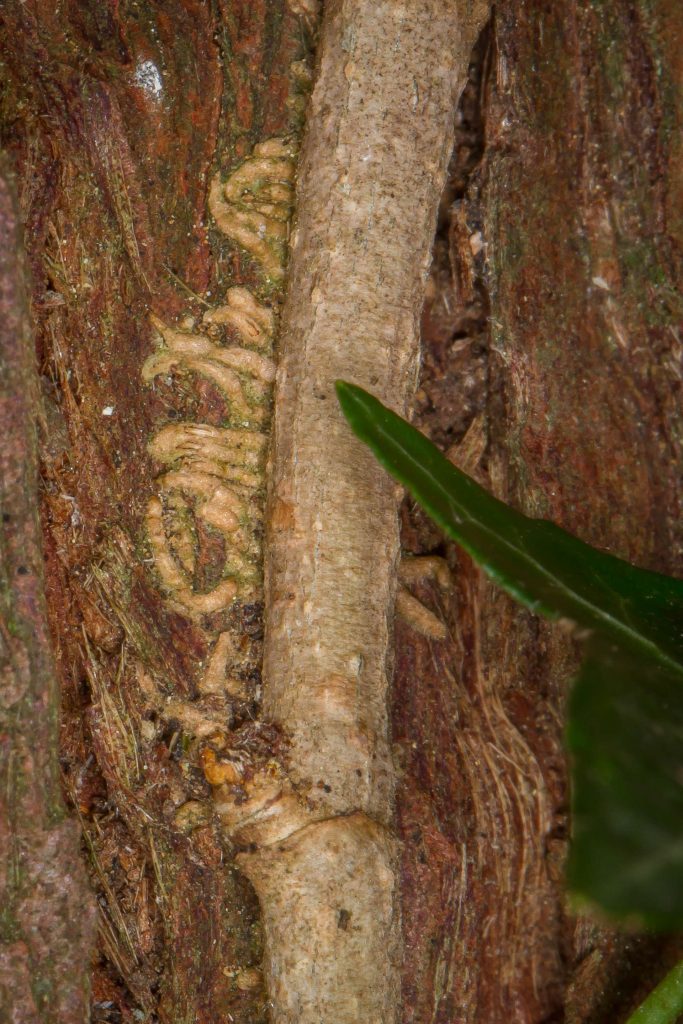
Plants are different from animals in that their life history is preserved in their current bodies – this sounds strange, but we’ll discuss it more in class and it will become clear to you. You’ve probably seen pictures of yourself as a child. You looked different back then, your head was big in relation to your body, and your facial features were different. Now, that you are an adult, those juvenile features are no longer found in your body. Plants, however, retain their juvenile bodies and simply add more, eventually adult, body mass to it. As a rule of thumb, the base of the plant is where we find the juvenile parts of the body, and the tips (the most recently formed parts) are where we find the relatively adult parts of the plant body. In some plants, these two states, the juvenile (non-sexually reproductive) and adult (sexually reproductive) states show some morphological differences, e.g. in leaf shape or the degree of thorns produced along the stems, this allow us to tell them apart. In other plants, the juvenile and adult parts of the body look the same, except for the absence and presence of reproductive structures (cones, flowers, fruits) in the two parts, respectively.
English ivy has two distinct growth forms that reflect its juvenile (vegetative growth) and adult (vegetative + reproductive) state. The juvenile state has a vining growth habit (the stems are quite lax/floppy) and the leaves are 3-5 lobed. The adult state has woody stiff stems and unlobed leaves, and if it’s the right time of year, there will be flowers and/or fruit present. Look at the images below to see what I’m talking about.
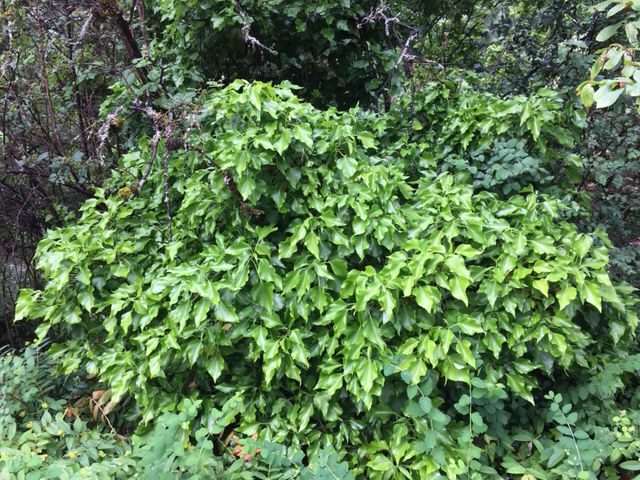
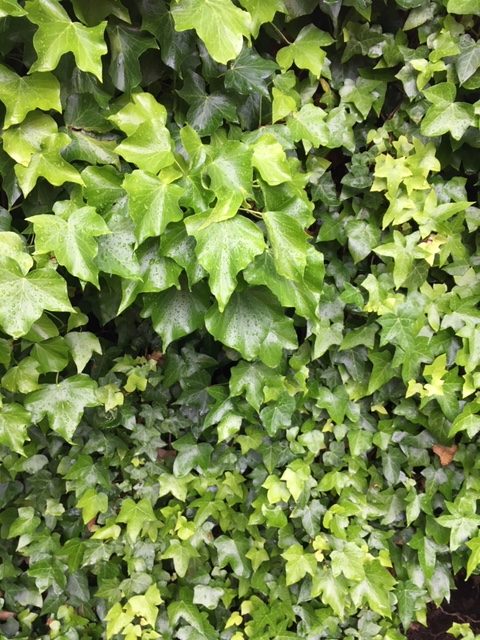

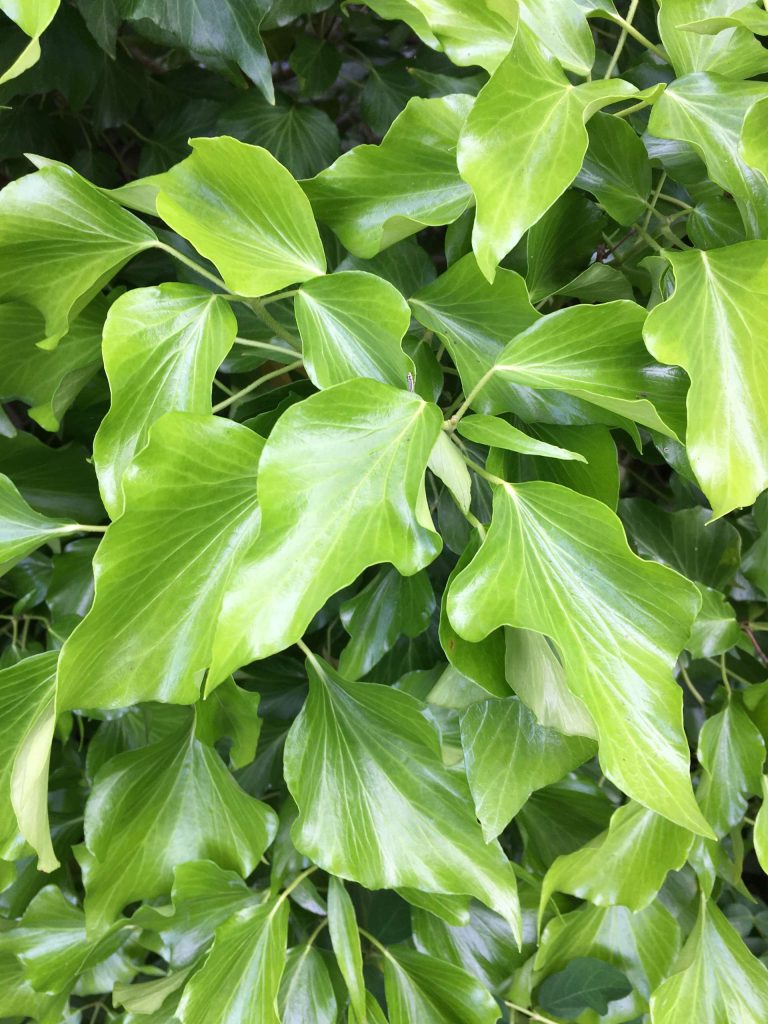
English ivy usually flowers in late summer in our region. The flowers are ‘globose’ green structures held in a globular flower cluster (inflorescence). You can see the pollen-bearing male reproductive parts (stamens) sticking out like little yellow-tipped sticks from each flower, and the female reproductive part in the center of each one. The flowers produce a lot of nectar and attract many pollinators.

